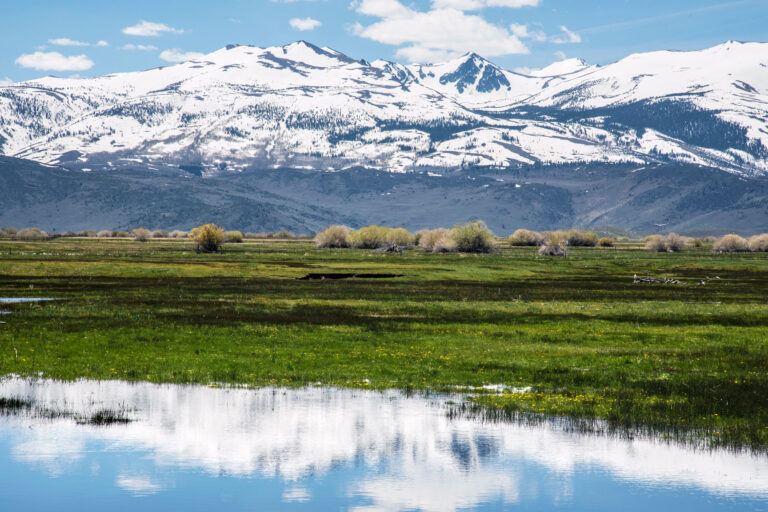Table of Contents
Letter from the Center Director
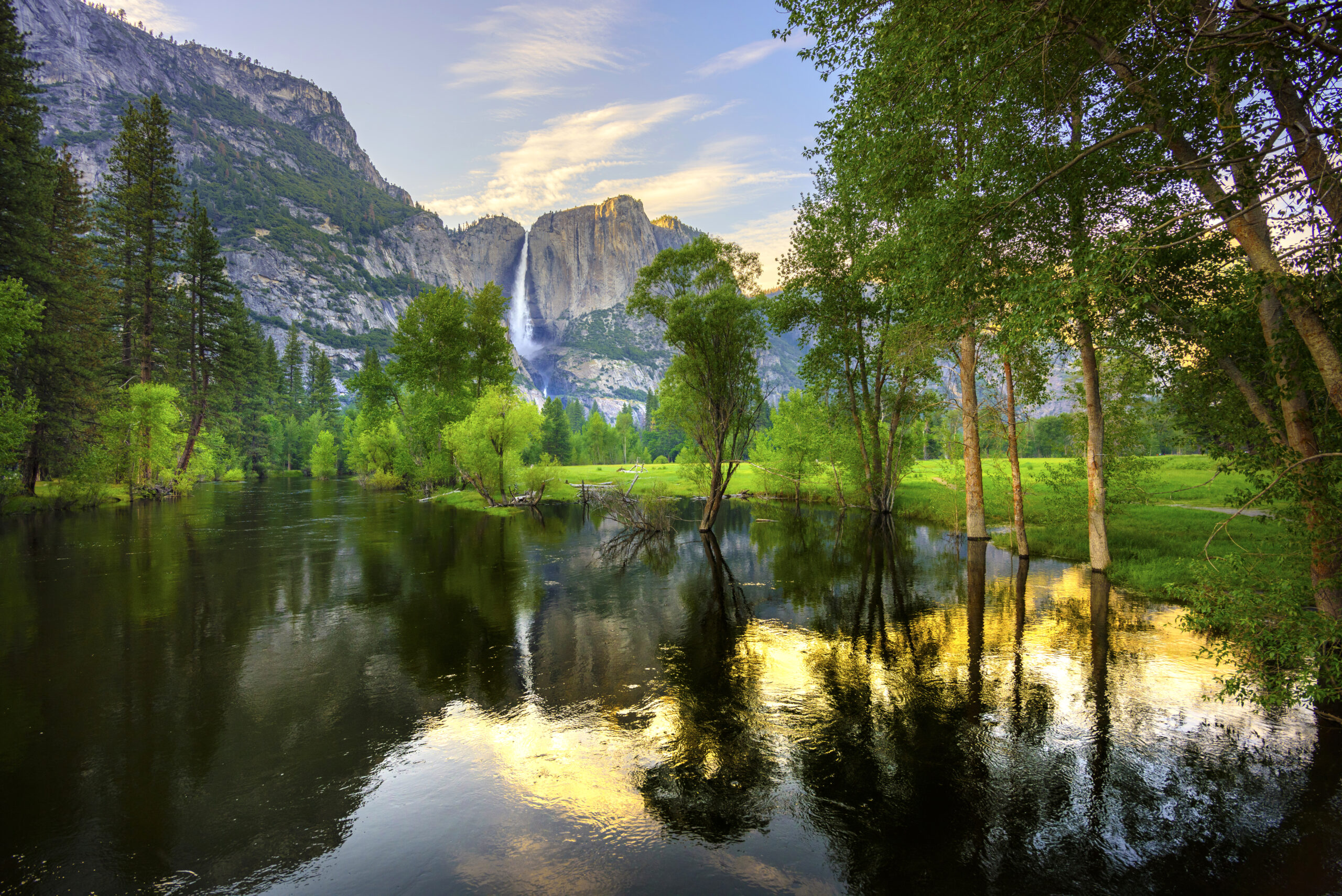
California has always been an exceptional place. In the 1800s, the state’s ancient coast redwoods and sequoias generated disbelief on the East Coast: dwellers there imagined that photos of these giants were doctored.
Our vibrant agriculture, teeming fisheries, spectacular forests, raging rivers—many of these wonders must be seen to be believed. And Californians adore their state: an explosion of wildflowers—like this spring’s superbloom—is enough to inspire a temporary mass migration to the state’s most remote corners. Californians care deeply about protecting the magic of this place we call home.
But a highly engineered water system, heavily transformed landscapes, and a changing climate mean that much of what we hold dear is struggling. This year’s unprecedented surge in global temperatures made the summer of 2023 the hottest in recorded history. That has major implications for the entire planet, and in California—a state already known for its variable climate—the swings are becoming more pronounced and more damaging. We are seeing the atmosphere grow warmer, which is drying the landscape, stressing vegetation, further depleting aquifers, and fueling extreme wildfires in places that hadn’t experienced them before. This year, the salmon fishing season experienced a full closure due to dwindling populations.
A warmer atmosphere also holds more water, which means that when precipitation does show up, it’s often record-breaking. This year’s epic snowpack, dramatic flooding in the Central Valley, and tropical storm in the desert highlight the need to manage volatility. Californians are being asked to strike a strange balance between being prepared for both biblical droughts and unprecedented deluges. The happy medium—never a common experience for the state—is shrinking.
This policy brief examines how California’s water sector managed the unusually wet conditions of the 2023 water year and outlines priorities for action, drawing on discussions with experts from around the state. We conclude that while California has made great strides in planning and preparing for a drier, hotter future, equal emphasis is now needed on improving management during wet years.
This is a challenge Californians can and must rise to meet. Collaboration and cooperation are no longer icing on the cake: they are essential to help us respond to rapidly evolving conditions. Local, state, and federal agencies must work together. Communities and Tribes must have a say in how precious resources are spent—especially when it comes to protecting drinking water and preventing damaging floods. And the environment—too long an afterthought—must be an integral part of the picture.
The best way forward is to design projects that bring broad benefits. Recharging groundwater can aid growers, city dwellers, and wildlife simultaneously. Investing in infrastructure to protect communities at risk of flooding could also assist wildlife, farmers, and community water systems. Finding and exploiting synergies can make state and federal dollars go farther and help more people. California’s infrequent deluge years can be seen as a nuisance or as an opportunity that must be harnessed. Let’s seize them, prepare for them, and make the best use of them possible.
As we undertake this work, I’m both happy and humbled to find myself at the helm of the PPIC Water Policy Center. I have valued the center’s research for many years—and collaborated with the center in the past. As its new director, I’m committed to continuing the mission to connect nonpartisan, objective research with the most pressing water management debates. To meet the challenges ahead, we must move swiftly but carefully, with the best possible data informing our actions. Thanks for welcoming me, and thanks for all you do.
Sincerely,
Letitia Grenier
Director, PPIC Water Policy Center
2023: The California Weather Gods Must Be Crazy
For the past dozen years, California has been subject to large swings in precipitation, and some of these years have been the warmest in recorded history. The 2023 water year, which ran from October 1, 2022 to September 30, 2023, was no exception: it is part of an overall trend of increasing seasonal and annual precipitation volatility and rising temperatures, mirroring changes across the US and around the world.
The chaotic weather of 2023 can be summarized by five episodes, each of which brought its own challenges:
The 2020–22 drought continued. The fall of 2022 was exceptionally warm and dry, with low reservoir storage in California and record lows in the Colorado River’s main reservoirs, Lake Powell and Lake Mead. Seasonal forecasts—citing La Niña conditions—called for a continuation of drought conditions.
A “winter in three weeks.” From late December to mid-January, California was hit by nine significant atmospheric rivers. Flooding affected 24 counties, and at least 22 people died. Much of the state received more than a year’s worth of precipitation in a matter of weeks; the Sierra Nevada snowpack in late January exceeded the April 1st average.
A dry mid-winter. Very dry conditions then resumed, concerning water managers who were already worried about relatively low precipitation in the headwaters of the state’s two largest reservoirs: Shasta and Oroville.
An epic snowpack. The dry spell broke with a series of strong, relatively cool late-season storms. Prodigious snowfall covered the Sierra Nevada and Cascades, setting a record for snowpack in the headwaters of the Tulare Lake region in the southern San Joaquin Valley. An unusually cold spring slowed the snowmelt and prevented widespread spring flooding in the San Joaquin Valley, but portions of the ancestral Tulare Lake refilled for the first time since 1997.
A warm summer, with a surprise. A cool spring gave way to a very hot summer, mirroring conditions throughout the northern hemisphere. In late August, a rare tropical storm—the remains of Hurricane Hilary—made landfall in Southern California and hit interior deserts and much of the intermountain West. Precipitation records were set in many places, with numerous damaging flash floods and debris flows. Remarkably, there were no fatalities in California.
The 2023 water year provided a case study of California’s increasingly volatile climate, with large swings between wet and dry conditions both within and between years. It highlighted our need to better navigate multiple imperatives: storing more water during intense wet periods to build water supply reliability, protecting communities and infrastructure against the threat of increasingly damaging floods, and taking better advantage of wet years to improve the health of freshwater ecosystems and native fish and wildlife.
Storing Water in 2023
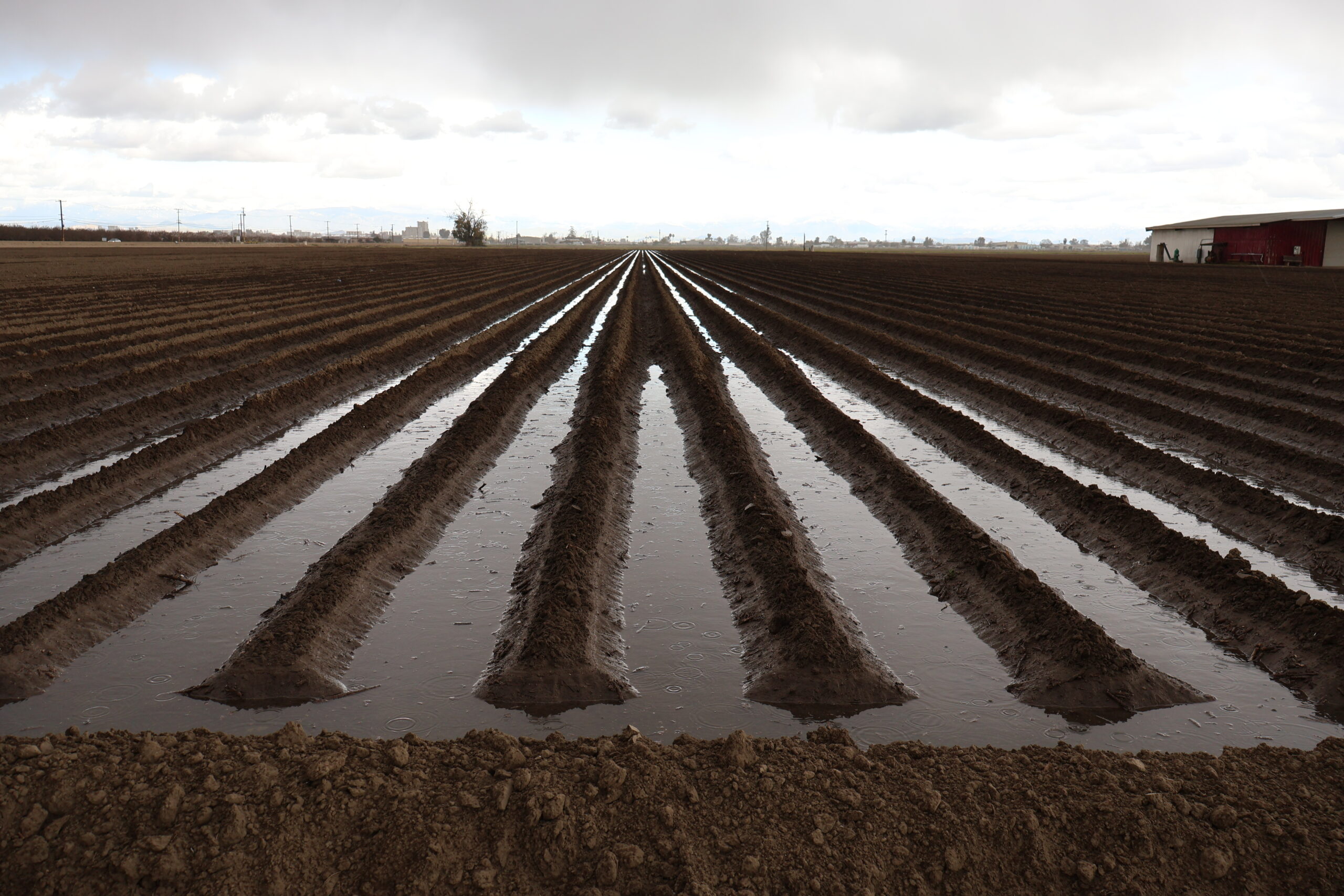
In 2019, all of California’s major water supply reservoirs were mostly full by early summer. Yet less than two years later, the state declared a drought emergency, with some reservoirs at near-record lows and groundwater levels once again in sharp decline. The memory of this rapid change in fortunes loomed large in 2023.
Efforts to fill reservoirs dominated early-season operations in 2023. But by March, as the storms kept coming, reservoir operators—knowing there would be abundant snowmelt runoff—were balancing their efforts to store more water against leaving room in reservoirs to manage downstream flood risk. By late spring, almost all major reservoirs were full. A surge in runoff also increased storage in Lake Powell and Lake Mead in the Colorado River basin—giving a temporary reprieve to a system that supplies water to much of the West and parts of Mexico.
After several years of drought, 2023 offered a welcome opportunity to recharge groundwater basins depleted by historic overuse. Many overdrafted basins face the prospect of significant pumping cutbacks to comply with the Sustainable Groundwater Management Act (SGMA), and expanding recharge can lessen these pressures. The California Department of Water Resources (DWR) estimates that recharge projects were able to capture and store approximately 3.8 million acre-feet of water by mid-summer, principally in the heavily overdrafted San Joaquin Valley. For perspective, that is roughly the volume of water stored in Lake Oroville, the state’s second-largest reservoir. Managed recharge efforts also occurred throughout Southern California, which has invested heavily in underground storage.
In early March of 2023, Governor Newsom issued the first of several executive orders (EO) that allowed managers to divert water for recharge without a permit, if there was an imminent threat of flooding and they took measures to protect water quality. By fall, the EOs enabled recharge of nearly 400,000 acre-feet—and they represented a novel attempt to pair groundwater recharge with flood-risk reduction in both the San Joaquin Valley and the Eastern Sierra.
Efforts to Store Water Faced Many Challenges
Water managers struggled to take full advantage of this wet year. Among the top issues:
Insufficient opportunities to store water. Most surface reservoirs filled while there were still ample supplies in the system. The Central Valley Project (CVP) and State Water Project (SWP) had to reduce exports from the Sacramento–San Joaquin Delta due to limited surface storage capacity and insufficient access to groundwater storage sites south of the Delta. We estimate that the projects could have diverted and stored more than 600,000 additional acre-feet of water from the Delta while meeting environmental regulations. Another 1.2 million acre-feet of San Joaquin River flows could have been captured upstream of the Delta while meeting these requirements.
Incomplete preparation for recharge. Groundwater recharge is the most affordable and rapidly achievable source of new storage in California. Although interest has been growing in expanding recharge—especially in areas seeking to comply with SGMA—many areas were not prepared to take full advantage of this wet winter. Efforts were hampered by a lack of coordination between surface reservoir and recharge operations, limited infrastructure to move water to suitable areas, time-consuming permitting requirements, and a dearth of landowners and local agencies sufficiently organized—or even willing—to take water.
Unrealized potential to improve community water wells. The abundance of water created an opportunity to improve drinking water wells impacted by overpumping. Some strategic recharge efforts have begun—for example a partnership between Tulare Irrigation District, Self-Help Enterprises, and the community of Okieville. But for many reasons—including the constraints noted above and potential water quality concerns with recharge—community wells are unlikely to experience many benefits from actions in 2023.
Lack of strategic water storage for the environment. During wet periods, environmental flow and water quality standards are typically met by natural runoff conditions, so water for the environment gets little attention. Yet the relaxation of environmental standards during the past two droughts highlights the need to do a better job of setting aside more water during wet years that can be used to support vital habitat during dry periods. And in some areas recharge efforts can improve habitat conditions.
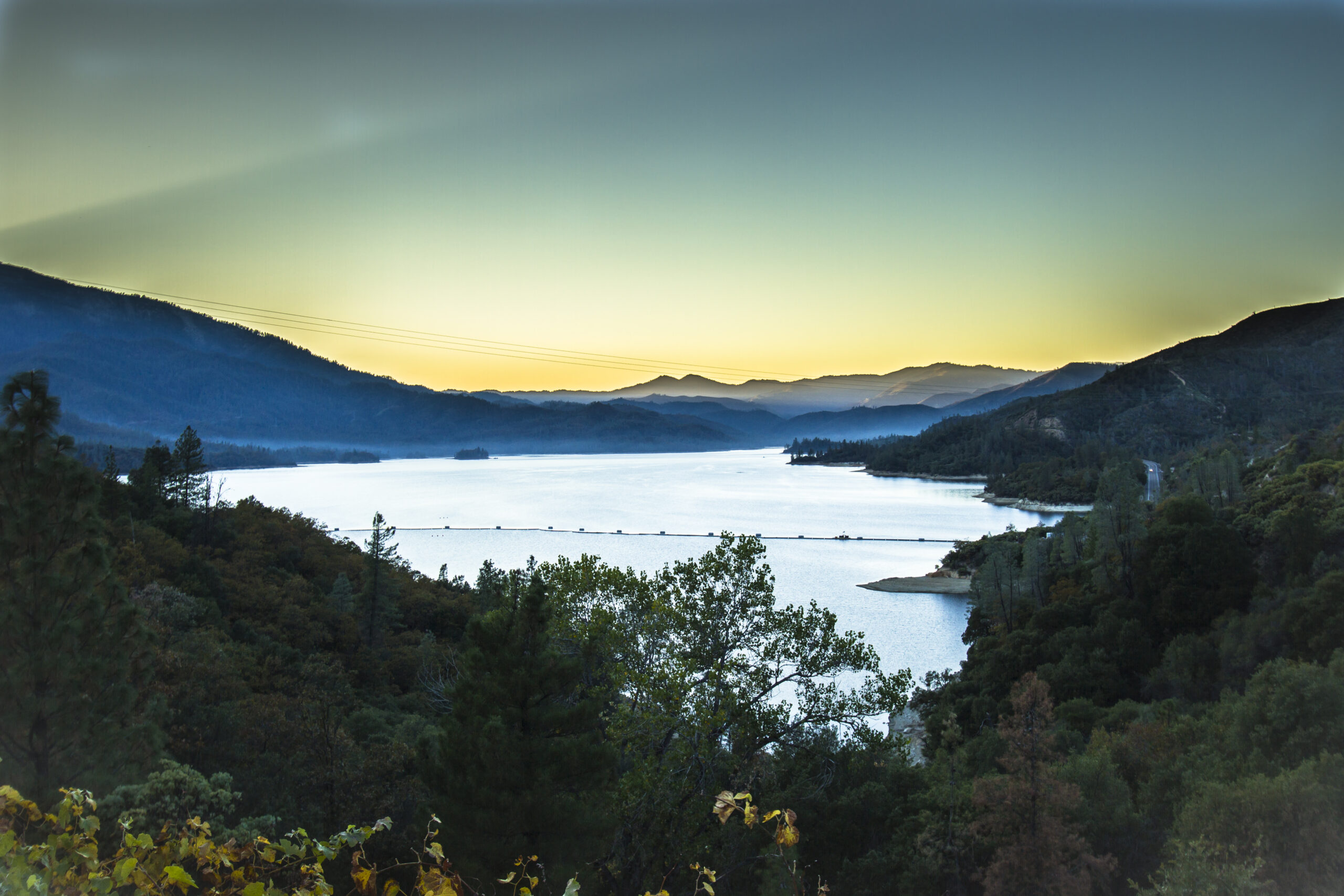
These challenges must be addressed if California is to adapt to increasing climate volatility and do a better job of preparing for dry years during wet ones.
Managing Floods in 2023
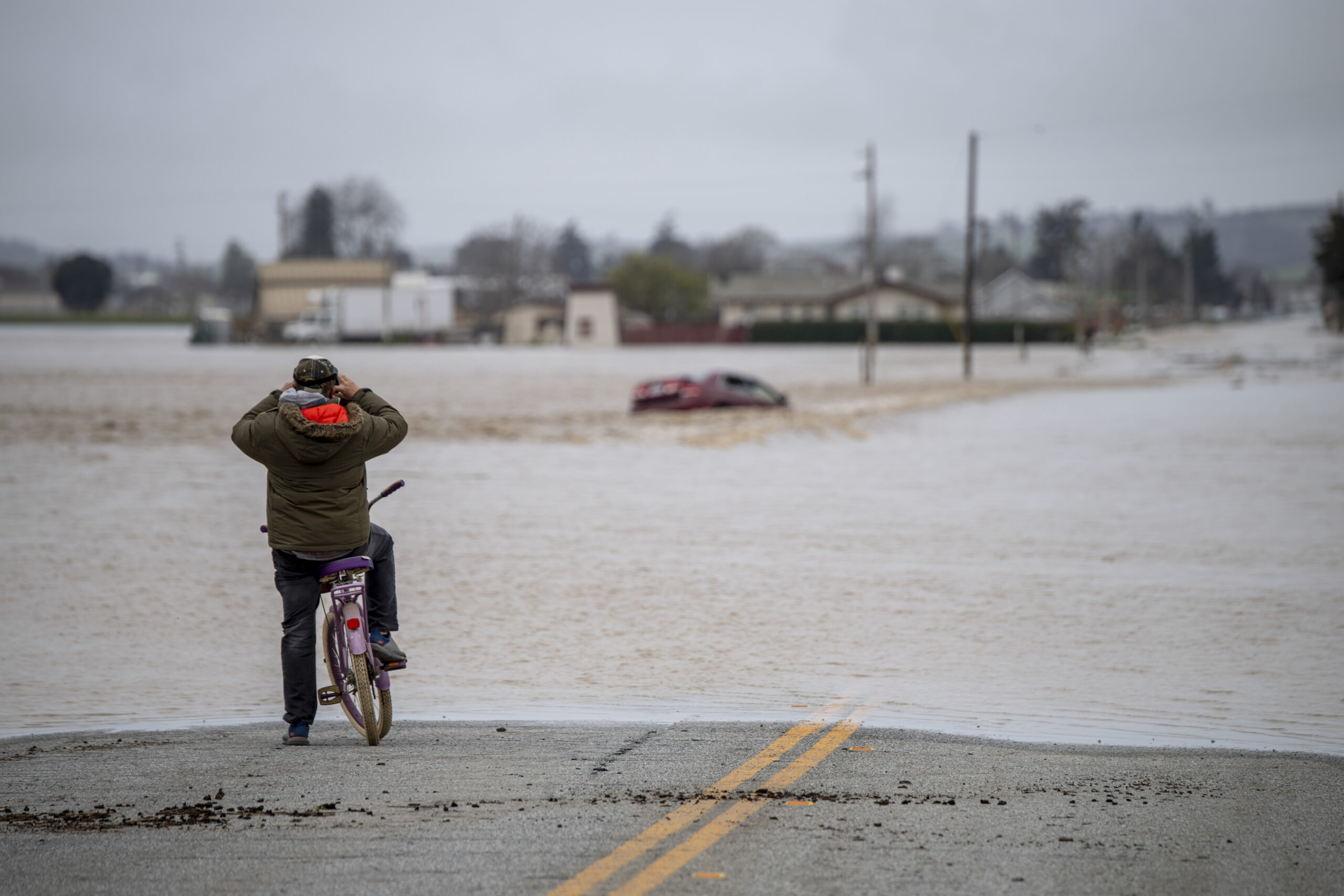
By most measures, 2023 was a modest flood year. The winter and spring saw local impacts from river flooding, with nearly two dozen deaths and property damages estimated at $4.6 billion. (The damages from the summer flooding associated with Tropical Storm Hillary have not been fully assessed yet.)
A combination of factors kept the damages from being much larger. Much of the precipitation fell as snow rather than rain; a cool late spring and early summer reduced the risk of snowmelt flooding; and reservoirs, mostly empty from the drought, were able to absorb much of the runoff. Coordinated flood responses by federal, state, and local agencies—bolstered by good short-term forecasts—also helped reduce damages and loss of life. Subtle changes in any of these factors would likely have resulted in much greater flooding. And numerous studies have shown that the risk of significantly larger floods is increasing, meaning it’s critical to prepare for even bigger storms than what California experienced in 2023.
Still, damaging floods did occur in the Central Valley and the Central and South Coast. Levees failed on the Cosumnes, Salinas, and Pajaro Rivers. The small town of Pajaro incurred extensive damage, and a number of small, rural towns in the San Joaquin Valley were also flooded. In coastal Southern California and the deserts, winter and summer flash floods and debris flows caused significant damage in some areas.
The most publicized flooding occurred in the Tulare Lake region, where four rivers—the Kings, Kaweah, Tule, and Kern—drain into an enclosed basin with limited outlet to the ocean. This area has no regional flood control system, and the lack of coordination was evident as late-winter atmospheric rivers threatened several rural towns. The melting of the record snowpack in the headwaters led to the flooding of more than 100,000 acres of farmland—a temporary return of Tulare Lake, which was once the largest freshwater lake west of the Mississippi River.
Finally, 2023 was remarkable for management experiments that sought to reduce flood risk. In the Sacramento Valley, some reservoir operators used improved near-term weather forecasts—already recognized as a way to boost water supplies—to better manage floods. And the governor’s executive orders allowing unpermitted diversions of floodwaters sought to reduce flood risk by moving water off rivers for recharge. In addition, DWR led a concerted effort to divert water out of the Tulare Lake region to reduce flood impacts.
Flood Managers Faced Many Challenges
This year highlighted some significant issues for flood management, including:
Aging or insufficient flood control infrastructure. Flooding in 2023 underscored that many of California’s regions are poorly prepared for increasing flood risk. Experts we consulted cited the dual challenges of maintaining existing, aging levees and other infrastructure designed for mid-20th century hydrology and land use while developing new facilities to cope with increasing flood risk. Flood investments are “fiscal orphans” that face major funding hurdles, even with recent increases in federal and state funds.
Poor regional flood planning and response. The flooding in the Tulare Lake region illustrated the challenge of managing floods at the regional scale without a regional flood plan. Roles and responsibilities for flood management decisions were unclear, leading to miscommunication and conflict over uncoordinated actions. And flooding throughout the state highlighted the need for better land use planning to lessen flood risk. It also raised questions about the adequacy of current levels of flood protection in the changing climate.
Gaps in protection for low-income communities. Recent studies have documented how low-income communities in California are both at higher risk of flooding and less equipped to recover once flooding occurs. Historically, federal and state investment in risk reduction in these communities was discouraged by policies that tied funding to land values. These same communities also lack resources to meet federal cost-share requirements. This is slowly beginning to change, with federal funds now available for technical support, but the backlog is large.
Insufficient preparation for multi-benefit experiments. DWR’s experimental efforts to combine flood reduction with diversions for recharge, while laudable, were initiated at the height of the flood emergency. Advance preparation in permitting, infrastructure, and—perhaps most importantly—cooperation among water managers and landowners would enable more effective innovation when the emergency strikes.
Insufficient nature-based solutions. Many native species rely on wet years to recover their populations and build resilience for inevitable droughts. But recovery also requires high-quality habitat—such as channel margins, floodplains, and seasonal wetlands—to make the most effective use of high flows. As the Central Valley Flood Protection Plan highlights, such natural infrastructure can help reduce flood risk while meeting environmental objectives. But the current scale of investments is small compared to the opportunity and the need.
Flooding in 2023—while relatively modest—pointed to weaknesses in flood management that will need to be addressed to respond to increasing flood risk.
Priorities for Better Wet Year Management
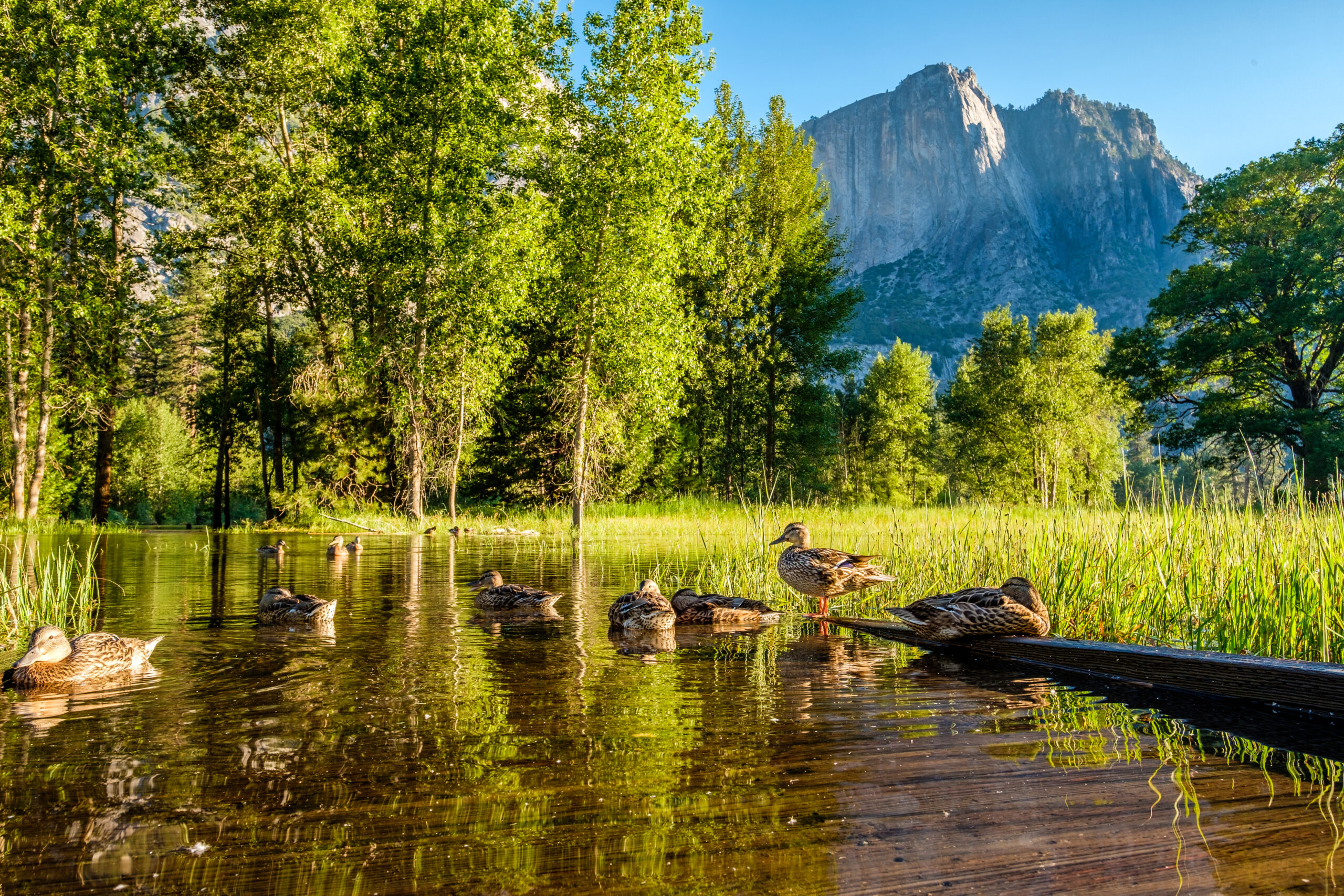
Over the past dozen years, California has experienced the two warmest and driest three-year periods on record (2013–15 and 2020–22). We also saw record-high total precipitation in 2017 and a near-record snowpack in the Sierra Nevada (and record summer precipitation in parts of Southern California) this year. Such volatility is only expected to grow.
California has made many advances in tackling increasing drought intensity. But there is much work to be done to improve how we manage wet years, to both boost water supply reliability and reduce flood risk. Our interviews with managers and other stakeholders suggest five priority areas for improvement:
Plan better for wet years. This year provided a stark reminder that water supply and flood management need to be integrated at the regional level proactively before a wet year occurs, not reactively in the midst of one. Planning should not be single-issue focused. Rather, it should seek to achieve water supply, flood control, and environmental objectives simultaneously wherever possible. It’s important to ramp up experiments to coordinate recharge and reservoir reoperations to reduce flood risk and store more wet-year water. Most importantly, this requires unprecedented institutional coordination and cooperation. Who should lead: DWR (planning, water supply, and flood teams), in cooperation with other state agencies, federal agencies, counties, local reservoir operators, and groundwater sustainability agencies.
Invest in infrastructure. California’s water supply and flood infrastructure is not up to the task of adapting to increasing climate volatility. Integrating wet- and dry-year management will require a multi-decade infrastructure investment program that focuses on conveying water to recharge sites, improving flood defenses, and integrating nature-based solutions where appropriate. Some new reservoirs, such as Sites, may be built. But for many reasons, it is unlikely that new large multipurpose reservoirs will be the backbone of future efforts to manage water. Existing storage facilities can be upgraded and managed better, and the state can play a key role in helping to solve the numerous small bottlenecks that exist within conveyance and flood control systems (things as simple as pumps, canals, weirs, and fish screens that impede efforts to convey and store water). Potential recharge areas that are privately held need to be considered part of this infrastructure, with incentives for landowners to accept recharge water. And equally important, California must chart a way to fund this vital work. Who should lead: DWR, in partnership with other state and local agencies and with support from the legislature, should develop a wet-year infrastructure plan, including how to implement and fund it.
Improve regulation and permitting. There have been significant advances in the past few years to simplify and streamline the permitting of recharge, infrastructure, and restoration efforts. And interest in climate adaptation has never been greater at the state and federal levels. But interviews revealed that these efforts remain a work in progress, with high costs, frequent delays, and changing regulations and policies. In addition to expanding current efforts to make permitting easier for all facets of wet-year management, the development of regional high-flow diversion permits administered by DWR (or another entity that can best manage conditions for both recharge and flood control) may be desirable. Who should lead: The State Water Board, in cooperation with DWR and California Department of Fish and Wildlife, should develop a wet-year permit management plan that guides actions during high-flow events.
Make low-income communities a wet-year priority. As this year has shown, flood risk often falls disproportionately on low-income (and often rural) communities. Although the federal government has made it easier for these communities to receive technical and planning support, much work is still needed to reduce their flood risk and improve their recovery capacity. Many rural communities can also benefit from strategic recharge programs during wet years to improve the condition of their drinking water wells. Who should lead: Federal, state, and local agencies managing floods and water supply should incorporate equity considerations into all facets of wet-year planning and implementation.
Make the environment a wet-year priority. Little attention is paid to the environment when conditions are wet, yet high flows without high-quality habitat have much less chance of building resilience in native species. Nature-based solutions such as expanded floodways and seasonal wetlands present an opportunity to address flood control, water supply, and ecosystem issues simultaneously. And storing water for the environment is key to better managing ecosystems during dry times. The environment needs to become a priority—not an afterthought—in wet-year supply and flood management planning. Who should lead: Federal, state, and local agencies involved in flood and supply management should integrate the environment into all facets of wet-year planning and implementation.
All too often, California manages water through executive orders and emergency regulations. This is an indication that our policies, regulations, practices, and infrastructure—all designed to manage the climate of the past—are not ready to manage the volatile climate of today, much less that of the future. California has made great strides in planning and preparing for a drier, hotter future. But to be successful, we need to place equal emphasis on preparing for and better managing wet years. Doing so will reduce scarcity during the dry years, improve the environment, and help protect all Californians from damaging floods.
Topics
Drought Floods Forests and Fires Freshwater Ecosystems Paying for Water Safe Drinking Water San Joaquin Valley Water Supply Water, Land & AirLearn More
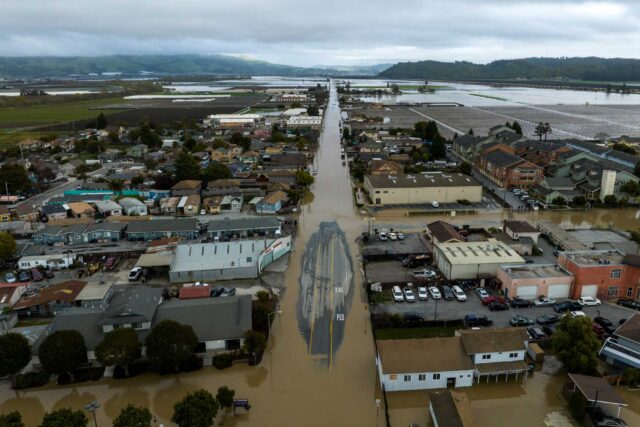
Commentary: Catastrophic Floods and Breached Levees Reveal a Problem California Too Often Neglects
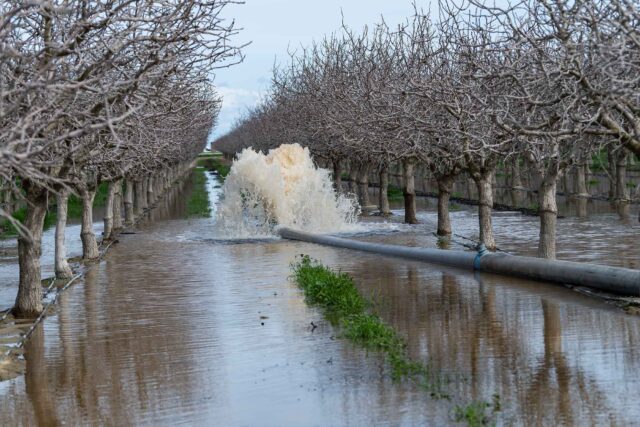
Renewing California’s Groundwater: Ready, Set, Recharge!
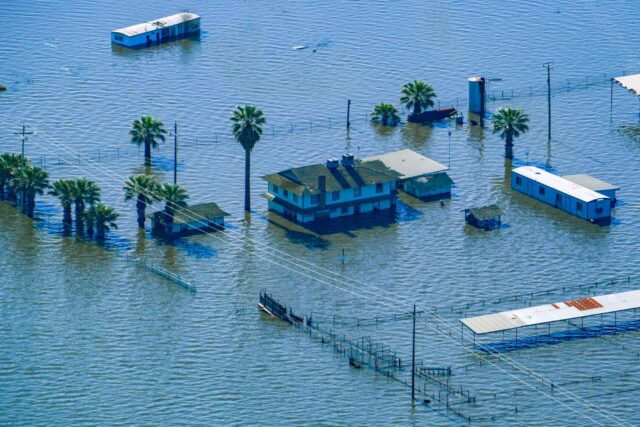
The Weird Weather of 2023: Better Get Used to It
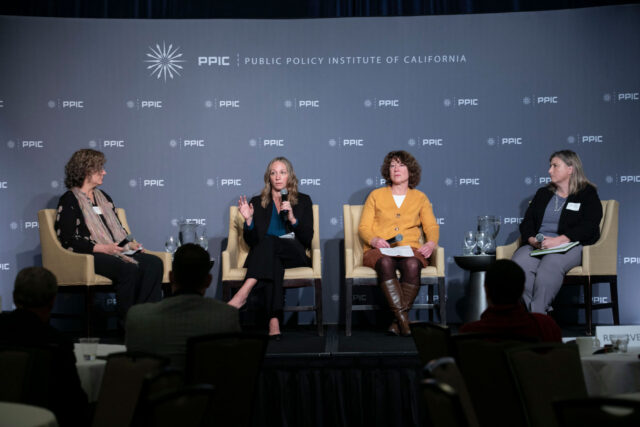
Video: Stewarding California’s Wet Years


